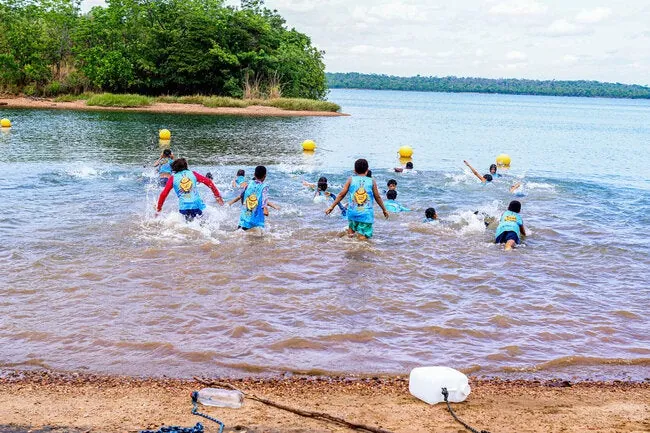
Drowning Crisis in the Americas: Progress Made, But Urgent Action Needed
2025-09-15
Author: Arjun
A Silent Epidemic Unveiled
In a shocking revelation, nearly 77% of countries in the Americas are without national strategies to combat drowning, a leading cause of death among children and the elderly. A new report from the Pan American Health Organization (PAHO) paints a grim picture of the public health crisis that desperately needs our attention.
Staggering Statistics
In 2021, upwards of 17,000 lives were lost to drowning in the Americas, representing around 6% of global deaths from the tragedy. Although the region's mortality rate is lower than the global average (1.6 vs. 3.8 per 100,000 people), vulnerable groups such as children under five and adults over seventy face alarmingly high risks.
Glimmers of Hope: Progress in Some Areas
Despite the daunting challenges, some countries are making strides. Over 70% of nations have established early warning systems for disasters and basic search-and-rescue programs. Public safety campaigns are on the rise, and an impressive 92% of countries have regulations focused on the safety of water transport. These efforts showcase the potential for multisectoral strategies to truly save lives.
Voices from the Field: A Call for Action
Dr. Anselm Hennis, PAHO’s Director of Noncommunicable Diseases and Mental Health, emphasizes the preventable nature of drowning tragedies. He states, "This report offers critical insights to chart our progress and highlight gaps, urging us toward collaborative, life-saving interventions.”
Major Hurdles Ahead
However, significant obstacles persist. Only 11 countries have a dedicated government point person for drowning prevention, and a mere 8% have national strategies driven by government initiatives. Various sectors—ranging from health care to disaster management—are attempting to help, but coordination between these efforts is lacking, with only 27% of countries reporting formal collaborations.
Data Deficiency: A Barrier to Progress
Accurate data collection remains a critical issue. Just 65% of nations have drowning death data integrated into their civil registration systems, making it difficult to pinpoint risk factors or the most affected demographics. Moreover, regulations for swimming pool safety are woefully inadequate, with only nine countries mandating pool fencing, a crucial protective measure for young children.
Urgent Interventions Needed
Efforts to prevent child drownings are still in their infancy, with only 23% of countries implementing physical barriers around water access for young children and a mere 15% providing supervised childcare options.
The Global Perspective
Globally, the World Health Organization (WHO) estimates that implementing two key strategies—preschool childcare services and swimming instruction in schools—could prevent up to 774,000 drowning deaths by 2050. This proactive investment is projected to yield a remarkable return: ninefold gains for every dollar spent.
A Collective Responsibility
The PAHO report highlights that addressing drowning in the Americas is not just a public health challenge but a collective duty. By fostering cooperation, increasing both investment and expertise, and leveraging evidence-based strategies, we have the potential to save countless lives—particularly among those most at risk. The time for action is now!




 Brasil (PT)
Brasil (PT)
 Canada (EN)
Canada (EN)
 Chile (ES)
Chile (ES)
 Česko (CS)
Česko (CS)
 대한민국 (KO)
대한민국 (KO)
 España (ES)
España (ES)
 France (FR)
France (FR)
 Hong Kong (EN)
Hong Kong (EN)
 Italia (IT)
Italia (IT)
 日本 (JA)
日本 (JA)
 Magyarország (HU)
Magyarország (HU)
 Norge (NO)
Norge (NO)
 Polska (PL)
Polska (PL)
 Schweiz (DE)
Schweiz (DE)
 Singapore (EN)
Singapore (EN)
 Sverige (SV)
Sverige (SV)
 Suomi (FI)
Suomi (FI)
 Türkiye (TR)
Türkiye (TR)
 الإمارات العربية المتحدة (AR)
الإمارات العربية المتحدة (AR)